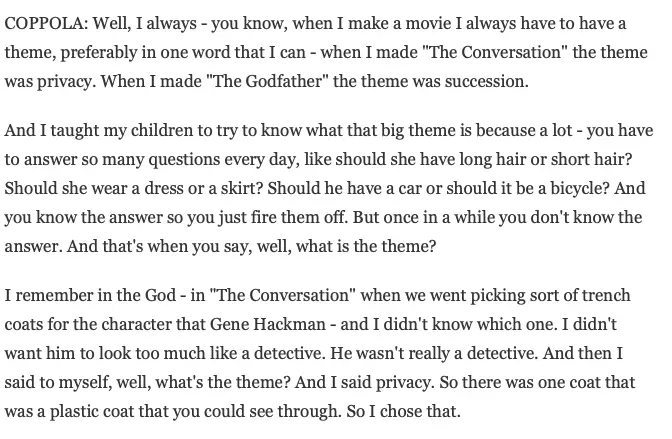For all you aspiring writers out there looking for some direction around writing your first script, here’s a quick, step-by-step guide to understanding the basic elements of screenwriting from writer-director Sudhish Kamath. An ex critic, Kamath has written, directed and produced several independent films including X: Past is Present starring Radhika Apte, Rajat Kapoor and the critically acclaimed Good Night Good Morning. His most recent film, an indie musical romance that unfolds on a train journey, is now available for streaming on YouTube.
Follow his tips through and you should be well on your way to putting that first draft together.
Idea
Write down all fleeting ideas in your Notes app on your phone. What’s an idea? An idea is pretty much any new thought or perspective the world is yet to hear about or needs to hear more. To give you an example, ‘social distancing feels like untouchability is back with new social dynamics.’
Write those ideas down till you have a bank.
Theme
The first step to development of a script is a theme once you have a bunch of ideas. Here are 10 classic examples of movie themes and why we need them.
Theme is usually one word.
Godfather = Succession.
Tu Hai Mera Sunday = Space
So what about untouchability do you want to explore?
Eg. Paranoia? Alienation? Othering?

Once you’ve identified a theme, the next step is to find a plot.
Plot
So what is a plot?
One line that powers the theme towards the conflict. Who wants what and what is stopping it?
Eg. A Dalit Uber Driver, back on the job post kidney transplant, starts questioning his humanity after treating all as untouchable in lockdown trips.
Next, you need a structure.
Structure
How do you want to play your cards to unfold the plot in the most exciting way? Each card is a sequence. Genre decides the structure.
Comedy thrives on punchlines, zombie films frequently escalate stakes…
Structure could be 2, 3 or 5 acts. What’s an act?
Act
Traditionally, films have three Acts. Beginning, middle and an end.
Beginning introduces the world, the characters and wants.
Middle puts the character/s in conflict and tightens the screws around a box they have found themselves in.
End is where characters, once and for all, seal their fates with respect to their want/s.
If the theme is best explored studying cause (first) and effect (second), you could pack the whole plot into two acts.
Case in point: Full Metal Jacket
An epic story might have five acts. Prologue, beginning, middle, end and epilogue.
Prologue sets the context. Epilogue sums up the fallout.
Here’s an example.
Act 1 – Set Up
Say, Uber Driver needs to resume duty post expensive kidney transplant. The first act ends with the inciting incident – the event that makes Uber driver returning to work the only option. Maybe his brother died of Covid and the only way to keep the car for the burial.
Act 2 – Obstacle
As the cases escalate, paranoia forces him to do things he doesn’t want to – stuff that makes him question his own humanity – even if he’s just doing what the world has been doing with the community for years. It’s his personal hell. He’s angry, lonely, bitter, frustrated…
The second act ends with rising action. Maybe, he gets what he fears most. Symptoms. Or the virus itself? And no beds or resources? Or maybe it’s not about his physical health but mental decay and morality?
Act 3 – Resolution
Does he continue with the job knowing he might have it? Is he able to find a test? Is his mental or physical health deteriorating because of his choices? What if he gets a positive result? Maybe he does. Does he fight it? What does he realise or learn as he lives or dies?
Once you have the acts finalised, break the acts down into sequences. What is a sequence?
Sequence
Think of it as a chapter of a novel, it’s bookended by two milestones in the journey of the plot. A related chain of events. How many sequences does the first act have and why is each sequence needed to get the character from one defining point or milestone in his journey to the next required by the theme?
If a sequence doesn’t contribute to the theme, delete it.
Characters
A lot of mainstream movies I see, set up characters in the first act. And that’s never worked for me. I want the audience to discover who these characters truly are only by the end of the film. So for me, character is not just who they say they are but also what they do since often there’s a difference between what people say and what people do.
Without witnessing the overall journey of the character, we really wouldn’t understand the true character.
A compelling screenplay, hence, is a road map of the character in transformation. Or rather the making of a character.
Hence, not only should the screenplay take a character from say, point A to Point Z but every milestone along the journey – every scene – should take us to a distinctly different journey, say, from A to B, B to C and so on to Y to Z.
The combined journeys of characters in conflict navigating and negotiating the crises they find themselves in is what I find fulfilling when I watch a film and what I strive to achieve.
The Trial of Chicago 7 is a classic example of how to design character arcs — what are they introduced as. At the beginning we see Abbie Hoffman as an irreverent rule breaker and ball buster of the gang and Tom Hayden as the responsible mature voice of the dissent — polar opposites with the others representing the shades between the two. As the film progresses, we witness the unravelling of their true character and we discover that the journeys of Abbie and Tom have taken them to understand and get to the opposite side of the spectrum.
There’s nothing more fascinating to watch than two conflicting ideas face off, collide and transform each other.
Closer home, Sandeep aur Pinky Faraar is a great example of character journeys taking us from point to point, milestone to milestone to the point of complete transformation at the end where the types we were introduced to at the beginning of the film have been turned on the head and have undergone a complete role reversal.
Scene
Sequences are broken into scenes. Each scene is a mini story set in one place at one time that plays out through a rhythmic series of emotional beats.
Beats
Beats are the arguments that expand on the theme and show every impact of it, and could be funny or emotional or any mood relevant.
Shot
A scene is broken down into shots. Shot is just your regular photo or video of one moment from the scene. It could be close or mid or long depending on what is important to that moment.
A movie could be seen as a series of shots or scenes or sequences but what it really is, is a series of emotional beats that should move people. The heartbeat of the screenplay depends on the strength and frequency of the emotional beats.
Conclusion
There you have it! A thorough understanding of these basic fundamentals of screenwriting is all you need to know to get started. I’d recommend a Masterclass subscription for those who can afford it. It’s around 14-15K INR and you get access to 90 classes. For all those interested in screenwriting, David Mamet on Dramatic Writing is a good starting point, then watch Aaron Sorkin Teaches Screenwriting and Judd Apatow Teaches Comedy. I have watched these half a dozen times over the last three years and found them to be extremely useful in finding solutions when I’m stuck. Happy writing!
